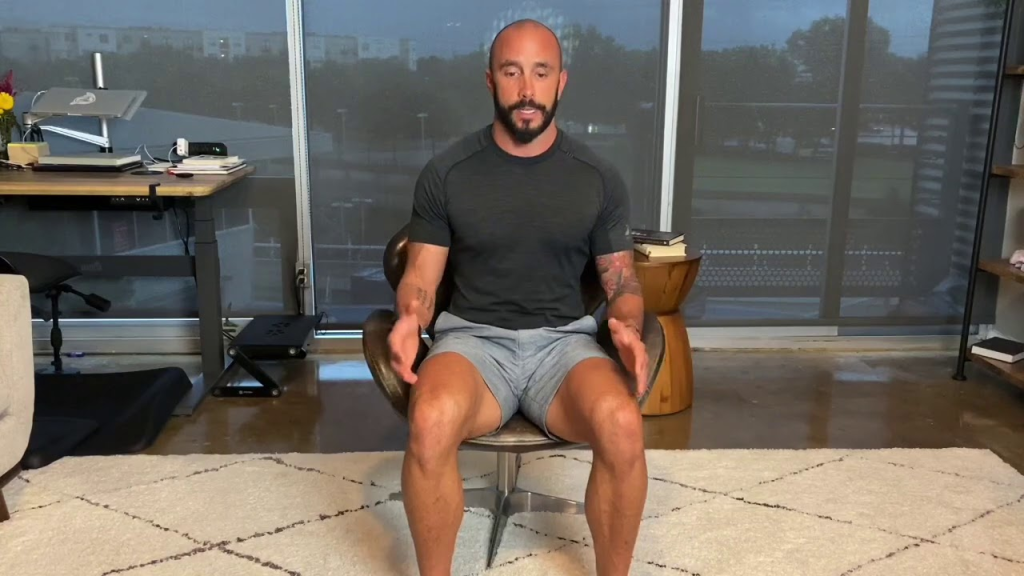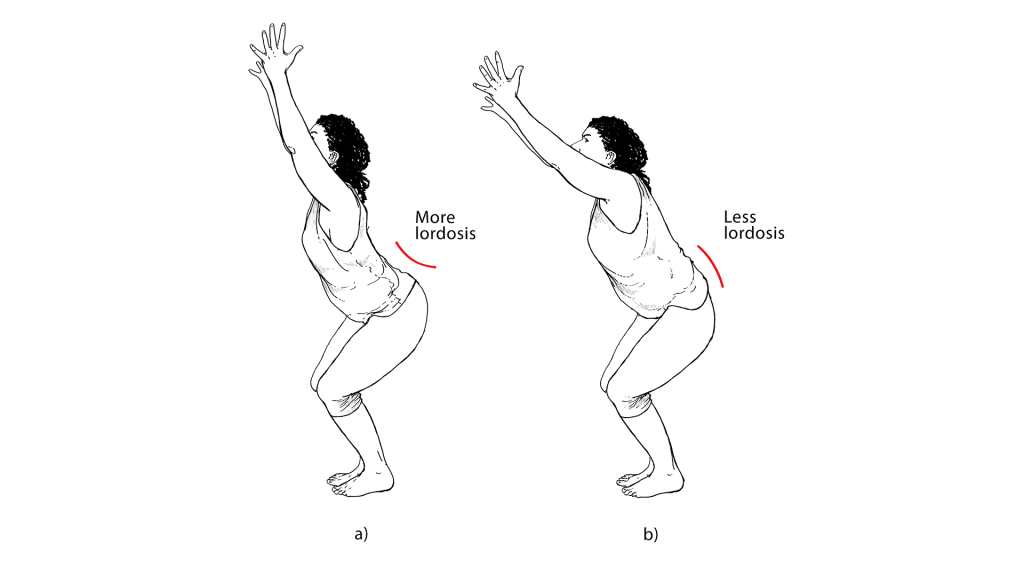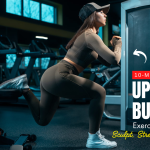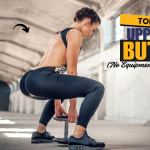What if you could boost your fitness without ever getting off the couch? Sounds like a scam? Well, it’s not. Welcome to the world of “No Movement” exercise routines – the ultimate fitness hack for the lazy genius. This is for the busy professional, the Netflix binger, the desk-bound worker, or anyone who wants to improve their health without breaking into a sweat or carving out an hour for the gym.
This routine doesn’t rely on traditional workouts, burpees, or yoga flows. Instead, it uses micro-efforts and static engagements that are incredibly effective but often overlooked.

What Can Happen After 30 Days of the “No Movement” Exercise?
| Benefit | What You Might Notice |
|---|---|
| Improved Posture | Reduced slouching, more upright sitting and standing, less strain on neck and back. |
| Increased Core Awareness | Easier to engage your abs and maintain balance throughout the day. |
| Muscle Tone Development | Slight definition in glutes, thighs, and arms—even without traditional movement. |
| Reduced Tension | Fewer headaches, less jaw clenching, and relaxed shoulders from mindful holds. |
| Better Breathing | Deeper, calmer breaths that help reduce anxiety and improve focus. |
| Enhanced Circulation | Warmer hands and feet, less stiffness during long sitting periods. |
| Mental Clarity | Improved focus and reduced mental fatigue due to increased oxygen intake and stillness. |
| More Body Awareness | You’ll notice small imbalances, tight spots, and feel more connected to your body. |
| Motivation to Do More | Reduced slouching, more upright sitting and standing, less strain on the neck and back. |
What Is the “No Movement” Exercise Routine?
The “No Movement” exercise routine is a low-impact, stationary method of engaging your muscles and improving your posture, blood flow, core strength, and mental clarity—all without doing traditional exercises. It involves:
- Isometric holds
- Postural alignments
- Breathing techniques
- Muscle contractions (without actual limb movement)
- Mind-muscle connection
Think of it as mindful stillness with intention—not laziness, but genius efficiency.
Do You Know?
Isometric exercises (exercises where muscles tense without changing length) have been used by astronauts to maintain muscle strength in space. If it works in zero gravity, it can certainly work from your couch.
Why “No Movement” Works (Backed by Science)
Most people think that if you’re not sweating, you’re not working out. But that’s a myth. Static muscle contractions have several physiological benefits:
- Muscle tone improvement – Holding tension in muscles builds endurance and strength.
- Core activation – Even while sitting, engaging your abdominal muscles helps posture and spinal support.
- Improved circulation – Controlled breathing and subtle muscle engagements improve blood flow.
- Stress reduction – Stillness combined with breathing triggers the parasympathetic nervous system, reducing cortisol levels.
Lazy Genius Routine – A Sample “No Movement” Daily Plan
Here’s a brief, structured daily routine you can practice while working, watching TV, or even in bed. Total time: 15–20 minutes.
1. Morning Reset (5 mins)
While sitting or lying down in bed
Neck alignment hold (1 min)

Sit upright and gently pull your chin back to align with your spine. Hold this position.
Breathing box (2 mins)

Inhale for 4 counts, hold for 4, exhale for 4, hold for 4. Repeat.
Glute squeeze (1 min)

Sitting down, contract your glutes. Hold for 10 seconds, release, and repeat.
Pelvic tilt awareness (1 min)

Tuck and untuck your pelvis slowly. Engage the core each time.
2. Midday Microboost (5 mins)
Desk or seated on a couch
Shoulder blade squeeze (2 mins)

Press shoulder blades together and hold for 10 seconds. Repeat.
Isometric bicep flex (1 min)

Tense your biceps as if curling an invisible dumbbell. Hold, release, repeat.
Foot press (2 mins)
Press feet into the floor while seated, activating legs and core. Hold for 5–10 seconds.
3. Evening Wind-down (5–10 mins)
While watching TV or lying down
Wall push (2 mins)

Sit near a wall and press your palms into it, arms straight. Hold for 10 seconds.
Static abdominal brace (2 mins)
Lie down and tighten your abs as if bracing for a punch. Hold and release rhythmically.
Face yoga + jaw release (2 mins)
Tense your face and release to relieve tension.
Deep breathing with music (4 mins)
Inhale deeply through the nose, and exhale through the mouth. Sync with calming music.
Interesting Fact
A 2020 study found that brief isometric exercises can significantly lower blood pressure, sometimes more effectively than traditional cardio.
Who Is This Routine For?
- People with sedentary jobs or limited mobility
- Individuals recovering from illness or injury
- Beginners who feel intimidated by gyms
- Mental health warriors seeking calm through gentle focus
- Anyone looking to ease into a healthier lifestyle
Real-Life Results – What People Are Saying
“I started doing this while watching Netflix. Now I have better posture, less back pain, and I feel more in control of my body.” – Nadia, 42
“No more guilt over missing workouts. This works for me.” – Jake, 29
Myth Busted
You don’t have to move to burn calories. Even seated isometric contractions use energy. Over time, the cumulative effect improves metabolic function and muscle endurance.
Tips to Maximize the Routine
- Pair it with hydration to support muscle engagement.
- Stay mindfully consistent—a little every day goes further than a lot once a week.
- Stack it with habits (like doing glute squeezes during TV ads).
Final Thought: Rewriting the Fitness Script
Fitness isn’t about six-packs or marathons. It’s about function, confidence, and feeling good in your body. The “No Movement” routine gives you the freedom to care for your body on your own terms. No sweat, no excuses, just smart action.
Be lazy. Be a genius. Get strong anyway.
Frequently Asked Questions (FAQs)
Can I really get fit without moving?
Yes, you can improve muscle tone, posture, circulation, and even core strength through isometric (non-moving) exercises. While it doesn’t replace high-intensity workouts for athletic training, it’s incredibly effective for foundational fitness—especially for beginners or sedentary individuals.
How long should I practice the “No Movement” routine daily?
Just 15 to 20 minutes a day is enough. You can break it into short segments—morning, midday, and evening. Even 2–3 minutes at a time adds up over the day.
Will I lose weight with this routine?
This routine alone won’t burn a high number of calories like cardio exercises. However, it helps build muscle tone and reduce stress, which supports a healthier metabolism. When paired with proper nutrition and hydration, it can contribute to gradual, sustainable weight management.
Do I need any equipment or special clothing?
Not at all. You can do this in your regular clothes, while sitting at your desk, lying in bed, or even during a conference call. No mat, no gym, no gear needed.
Is this routine safe for seniors or people with injuries?
Yes, it’s especially suitable for people with limited mobility, joint issues, or post-injury recovery (though always consult a doctor or physiotherapist if unsure). It’s low-impact and designed to be gentle yet effective.
How soon will I see or feel results?
Many people report better posture, reduced muscle tension, and increased awareness of their body within the first week. Visible toning or strength improvements can take a few weeks with consistent practice.
Is this routine mentally beneficial too?
Yes! The combination of deep breathing, mindful stillness, and controlled muscle engagement can reduce anxiety, sharpen focus, and increase body awareness—just like meditation with physical perks.
What if I forget to do the whole routine?
No problem. Even doing just one or two movements per day is a win. The goal is consistency over perfection. Stack it with habits like brushing your teeth, checking emails, or watching your favorite show.
Is this a long-term solution or just a beginner’s routine?
It can be both. For beginners, it’s a gentle way to build up strength and awareness. For seasoned individuals, it offers maintenance, stress relief, and micro-recovery in daily life.





